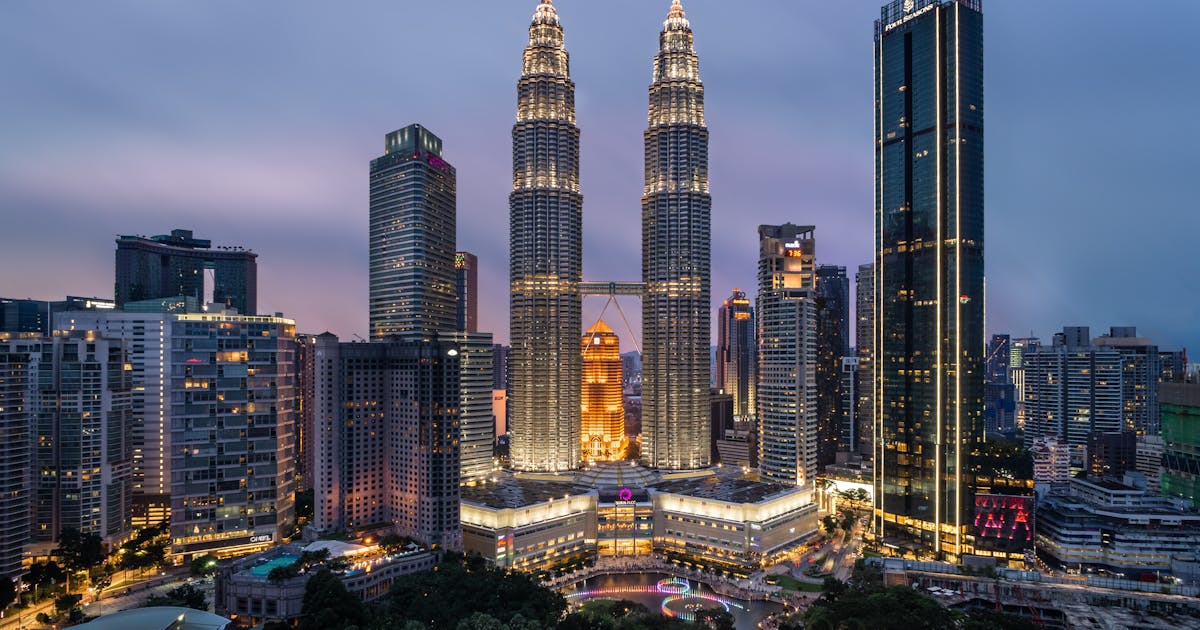Schengen Tourist Visa for Indians: How to Apply & Requirements
Last Updated : 26 Apr 2024
30 Second Summary
Indian travellers planning a trip to the Schengen Area must apply for a Schengen visa. This national visa allows you to travel freely to one of the 27 Schengen countries.
Indian nationals can apply for a Schengen visa at an authorised visa application centre or through Atlys.
Once your visa gets approved, the visa is affixed directly to your passport.
You must attend an in-person appointment for your visa.
Important Information
— Visa type
— Schengen visa processing time
— Schengen visa fees
— Length of stay and purpose of travel
What is the Schengen visa?
A Schengen visa for Indians is an official travel document that Indian citizens must have to travel to any of the 27 Schengen Visa countries. The visa permits you to enter a Schengen country for short stays up to 90 days within a 180-day period (for tourism and business purposes).
You can apply for a Schengen visa on Atlys or visit your nearest visa application centre.
Do I need a Schengen visa from India?
Yes. Indian citizens must apply for a Schengen visa to visit one of the listed Schengen countries. The 27 countries that require Indians to apply for a Schengen visa are:
Austria, Belgium, Czech Republic, Croatia, Denmark, Estonia, Finland, France, Germany, Greece, Hungary, Iceland, Italy, Latvia, Lithuania, Luxembourg, Malta, Netherlands, Norway, Poland, Portugal, Slovakia, Slovenia, Spain, Sweden, Switzerland, Liechtenstein.
If you plan to visit one of the above countries for tourism, you must apply for a short stay type C schengen visa. This will allow you to visit any one of the Schengen countries for a maximum of 90 days within a 180-day period (also known as the 90/180-day rule).
You can apply for a Schengen visa by visiting a visa application centre or online through Atlys.
Can Indians get a visa on arrival to enter the Schengen Area?
No. Indian nationals are not eligible to receive a visa on arrival to any Schengen country. You must apply for a Schengen visa in advance.
Do I need a Schengen visa from India as a US green card holder?
Yes. Unfortunately, you need a Schengen visa as a US Green Card Holder from India. Although you enjoy most of the same benefits as US citizens, you do not enjoy visa-free travel to the Schengen Area.
Schengen visa requirements from India
Schengen visa application form: Fully filled and signed.
A valid passport: Must be valid for at least three months beyond your trip’s end date, have at least two blank pages, and be issued within the last 10 years.
Passport photo: One recent photo that complies with Schengen visa specifications.
Flight itinerary: Proof of round-trip flight bookings.
Accommodation proof: Evidence of where you will stay during your visit, such as hotel bookings, rental agreements, or a CERFA form if staying with a host.
Travel itinerary: If on a tour package, include a detailed plan. If visiting a host, a CERFA form is needed.
Cover letter: A cover letter explaining your visit's purpose, itinerary, and intended return.
Travel insurance: Valid for the Schengen area with a minimum coverage of €30,000 (approx. ₹26,82,902.02), covering the entire duration of your trip.
Financial means: Bank statements from the last three months, endorsed by the bank, showing sufficient funds for your trip.
Income and tax documents: Recent Income Tax Return with ITR V acknowledgement and, if employed, a leave permission letter from your employer.
For self-employed or business owners: Business license, company tax returns for the last two years, and company bank statements for the last three months.
If you own a business: A certificate of registration for the company.
For students: Enrollment proof from your educational institution.
Proof of employment/studies: A letter from your employer or educational institution on official letterhead, stamped and dated.
Employment status documentation: Confirming your current employment status.
The document collection process is complex and can be confusing. Apply with Atlys to get personal concierge assistance with your visa application.
Jurisdiction for your visa application
The concept of passport jurisdiction requires that your visa application be processed by the embassy or consulate serving the area where you live. For a Schengen visa, you must ensure that you submit your application to the correct visa application centre responsible for your region.
Submitting your application to an application centre different from the one designated for your region is not possible and will lead to a visa rejection.
New Delhi:
Haryana, Himachal Pradesh, Jammu and Kashmir, Punjab, Rajasthan, Sikkim, Uttar Pradesh, Uttarakhand as well as the Union Territories of Chandigarh, NCT of Delhi, Andaman and Nicobar Islands, Lakshadweep including Minicoy and Amini.
Mumbai:
Maharashtra, Gujarat, Goa, Madhya Pradesh, Chhattisgarh, Daman and Diu
Kolkata:
West Bengal, Bihar, Jharkhand, Orissa, Assam, Arunachal Pradesh, Manipur, Meghalaya, Mizoram, Nagaland and Tripura
Bangalore:
Karnataka and Kerala
Chennai:
Andhra Pradesh, Tamil Nadu, Telangana and Pondicherry.
Atlys will submit your application to the appropriate application centre in Mumbai, Delhi, or Chennai, depending on your passport jurisdiction.
Schengen visa fees for Indians
The Schengen visa fee will be standard for all countries that form part of the Schengen Area.*
Schengen visa fee for adults: €80 (approx. ₹7,154.41
Schengen visa fee for children: €40 (approx. ₹3,577.20 )
Schengen visa fee for minors (younger than 6): Free
*The visa fees are subject to change. Check the official European Commission website for the most up-to-date information.
Schengen visa application process for Indians
How to apply for a visa on Atlys?
- 1
Provide your information:Start the visa application process by entering your informationon Atlys.
- 2
Connect with the visa experts:A visa concierge will contact you, carefully reviewing your travel plans and the necessary documents for your European visit. Our support team will be available to assist with any service or questions you may have about your visa.
- 3
Visa appointment:Atlys will secure you a suitable appointment date. Atlys will ensure your appointment is scheduled promptly and efficiently, providing peace of mind throughout the visa application process.
- 4
Checking your documents:We will help collect and confirm that all documents meet the necessary standards.
- 5
Attend your visa appointment:Attend your Schengen visa appointment to submit your documents and application forms.
- 6
Await visa approval:Wait for the visa to be processed. Once the processing time is finished, the Embassy will deliver the visa to you.
Why Choose Atlys
You will be assigned a dedicated visa concierge who provides personalized guidance and support throughout the entire application process.
Atlys leverages its industry connections and expertise to secure faster appointment times and processing timelines for your visa.
We ensure all your documents are complete and accurate before your appointment.
Atlys provides a guaranteed time frame for when you will receive your visa.
How to apply for a visa by yourself?
- 1
Book your visa appointment: Begin by scheduling an appointment for your visa at the nearest application centre. Doing this well in advance is advisable due to potential wait times, especially in high-demand periods.
- 2
Set up your online profile: Initiate your application by creating a profile on the designated visa application portal. Look for the option to start a new visa application and proceed to either register a new account or log into an existing one.
- 3
Complete the visa application form: Carefully complete the application form online, ensuring all provided details are accurate and complete. Upon completion, the portal will typically generate a checklist of documents you need to prepare for your visa appointment. Print this checklist to bring along with you.
- 4
Prepare your documentation: Gather all necessary documentation as outlined in your application form's checklist. This step is crucial and may require some time to ensure all documents are correctly filled out and compiled.
- 5
Attend your visa appointment: Visit the visa application centre on the date of your appointment, bring all required documents and prepare for a brief interview. This may also include submitting your biometrics.
- 6
Await application outcome: Following your appointment, the processing of your visa application begins, which can vary from 15 to 30 days or more, depending on several factors. You will be notified through your chosen method of communication once the decision has been made. If your application is successful, you will be instructed to collect your visa from the application centre.
Tips to Apply
Book a visa appointment well in advance, as available appointment slots are limited.
Keep your documents stored in a file for submission to the visa application centre.
Apply at the Schengen country where you will enter first, or spend the most time.
Ensure your health insurance meets the minimum requirements.
Have enough funds to support your trip.
Receive your approved Schengen visa
After you apply for your visa, wait for it to be processed. Apply for your Schengen visa early to ensure there's enough time for processing.
Authorities will notify you about the status of your visa via email, text, or call. You must return to the application centre to collect your passport and visa. Your Schengen visa will be affixed on a blank page on your passport.
Apply on Atlys to easily track the status of your visa application from submission to approval.
Schengen visa information for Indians
Schengen visa processing time from India
The visa processing time can take 15 days or more once submitted at the visa application centre. It does not include the time spent filling out the online form, waiting for an appointment, and submitting your biometrics information.
Atlys guarantees a time frame for when you will receive your visa.
Schengen visa validity & length of stay
In general, a Schengen visa for Indians allows you to visit the country for up to 90 days within a 180-day period*. The validity of your visa will be indicated on your Schengen visa sticker.
*Embassy officials will determine the length of stay and validity allowed depending on your trip details and application documents. It's important to review your visa sticker before travelling.
Our Commitment to Visa Accuracy
All the information in this blog is sourced from official government websites, ensuring reliability and accuracy. You can trust the content to be accurate, but remember to stay informed, as changes may happen without notice.
Government fees and processes can change over time. Atlys recommends double-checking the government website for the most current and up-to-date information before applying.
Frequently Asked Questions
When applying for your Schengen Visa, it's best to either apply to the Embassy of the country where you will enter first; or apply to the Embassy of the country where you will spend most of your time.
Visas in Under a Week

Cyprus Visa for Indians: Requirement, Fees & How to Apply
Apr 26, 2024Cyprus visa for Indians
Learn how to secure a Cyprus visa for Indians, from booking a Schengen visa appointment, paying the fees, to in-person submission of the required documents.

Oman Visa for Indians: Online Visa Requirements & Fees
Apr 26, 2024Oman Visa for Indians
Check out our guide on the Oman visa for Indians and learn about the application process, fees, validity and more

How Indians Can Apply For A Dubai Visa
Apr 26, 2024How Indians Can Apply For A Dubai Visa
In this post, you will find how Indians can apply for their Dubai Visa. We will also cover different ways to apply for your Dubai Visa and the required documents.

Indonesia Visa for Indians: Online Visa Requirements & Fees
Apr 26, 2024Indonesia E-Visa for Indians
Learn about the visa requirements, fees, processing time, and visa validity. Follow our step-by-step guide to apply for an Indonesia visa for Indians.

Malaysia Visa for Indians - New Visa Changes with MDAC
Apr 26, 2024Malaysia visa for Indians
Learn the new policy updates for the Malaysia visa for Indians. Our detailed guide includes the new visa regulations, requirements, and related fees.

Myanmar E-Visa for Indians: Online Visa Requirements & Fees
Apr 26, 2024Myanmar Visa For Indians
Know more about the essential steps to obtain Myanmar visa for Indians. Includes up-to-date info on requirements, fees, and application tips for Indian travellers.
Instant Visas

Maldives Visa for Indians: Visa on Arrival & Requirements
Apr 26, 2024Maldives Visa for Indians
Plan your Maldives trip with ease. Find out everything about the Maldives visa for Indians, from the required documents to the on arrival application process.

Bhutan Visa for Indians: Visa Free Entry & Travel Requirements
Apr 26, 2024Bhutan Visa for Indians
Explore Bhutan without the visa hassle: A guide for Indians on visa-free entry, the Bhutan entry permit, and what you need to know for a smooth travel experience.

Mauritius Visa for Indians: Visa on Arrival & Requirements
Apr 26, 2024Mauritius Visa For Indians
Simplify your Mauritius journey with our ultimate guide on the Mauritius visa for Indians. Learn about the visa requirements, visa-on-arrival process, fees, and more.

Nepal Visa for Indians: Visa Free Entry & Travel Requirements
Apr 26, 2024Nepal Visa For Indians
Explore Nepal without the visa hassle as an Indian traveler by understanding the visa-free entry and documents required to enter Nepal from India.

Thailand E-Visa on Arrival for Indians: Fee, Requirements & Process
Apr 26, 2024Thailand E-Visa on Arrival
Get your Thailand visa for Indian travellers with ease. Learn about processing times, required documents, fees, validity, and tips for hassle-free entry in Thailand.

Seychelles Visa for Indians: eTA Requirements & Application
Apr 26, 2024Seychelles Visa For Indians
Your complete guide to Seychelles visa for Indians: Learn about requirements, costs, and travel tips for an unforgettable experience.